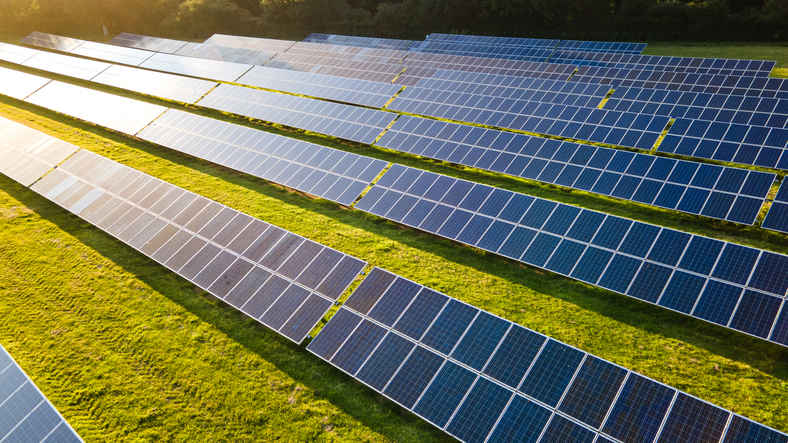For the full report, see the PDF.
Solar energy is electricity or thermal energy generated by sunlight striking either photovoltaic (PV) panels for electricity generation, 3 or Concentrating Solar- Thermal Power (CSP), which concentrates solar radiation for use as either electricity or thermal (heat) energy.4
CSP plants are most often used for larger scale electricity generation. Utility-scale CSP plants use large ground-mounted mirrors, which reflect and concentrate solar radiation onto a receiver tower.
PV technology systems use individual PV “cells” that are linked together into panels or modules.5 This type of solar power generation makes up most of the utility-scale electricity generation from solar in the United States.6
Quick Bullets:
Solar energy is generated when sunlight strikes photovoltaic panels, generating electricity.
Solar energy made up 5 percent of total electricity generation in the United States at its early summertime peak in 2022.
In 2019, the average wholesale electricity price of solar was on average $36 per megawatt-hour.
Solar does not work at night, performs poorly in cloudy conditions and during winter months, and struggles in high temperatures.


